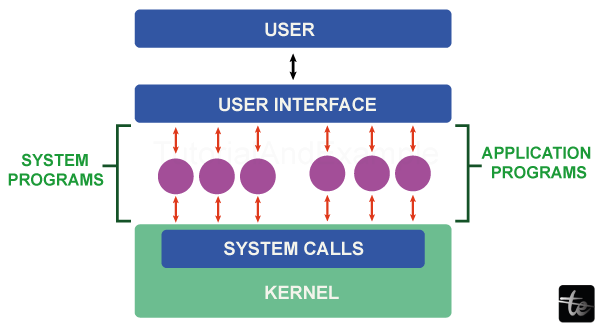System program in OS
In this article, we will discuss the system program in the operating system with its categories and types.
Building systems software using system programming languages is referred to as system programming. Hardware is listed as being the last in the computer hierarchy. Following that are the operating system, system programs, and ultimately application programs. System programs provide a comfortable environment for both program development and execution. Some of the System Programs provide straightforward user interfaces, while others are more intricate. The user interface and system calls are often where it stands.

Categories of System Program:
System programs can be classified into certain categories:
- File management: A computer system's memory is where it stores collections of specialized data or files. The process of generating, changing, and deleting files is included in file management, which is defined as the manipulation of files in a computer system.
- New files should be made in the computer system, and they should be placed in precise places.
- It facilitates finding these files in the computer system quickly and effortlessly.
- It makes file sharing between users incredibly simple and user-friendly.
- Files should be kept in distinct directories, sometimes referred to as folders.
- These folders support speedy file searches or file management based on the user's intended usage.
- Users can use it to change the name of files in directories or the data of files.
- File modification: It is what we utilize to change file contents. We employed various editors for files kept on disks or other storage media. We utilize certain commands to search file contents and conduct file alterations.
- Status information: Some users ask for details such as the time, date, amount of RAM that is available, or disk space. Some others offer more extensive and accurate performance, logging, and debugging information. This data is all prepared for output and printed or shown on devices. The program output is shown via the terminal, other output devices, files, or a GUI window.
- Program Loading and Execution: The program must be put into memory before it can be executed after assembly and compilation. Programs and libraries are loaded by a loader, which is a component of the OS. It is a necessary step in beginning a program. The system offers overlay loaders, linkage editors, relocatable loaders, and loaders.
- Communication: Programs offer virtual connections between users, users' computers, and computer systems. Users can transfer files from one user to another, send messages to other users on their screens, send emails, surf the internet, and log in remotely.
- Programming Language and Support: We utilize interpreters, compilers, assemblers, and debuggers for popular programming languages that are currently available to consumers. All user assistance is offered by it. Any programming language may run on our system. There are already translations in every significant language.
- Background services: On the operating system, there are several services that may be used for communication. One of these services called a background service, can be used to change the window's backdrop as well as search for and eliminate computer viruses.
Examples of system OS are: Windows 10
- Mac OS X
- Ubuntu
- Linux
- Unix
- Android
- Anti-virus
- Disk formatting
- Computer language translators
Types of System Programs:
System calls specify several sorts of system programs for various duties. Therefore system calls may be used to access the system programs that are in charge of creating and running programs.
Utility program: It oversees, keeps up with, and regulates several computer resources. Utility software is quite technical and is intended for individuals with strong technological backgrounds. Software like backup software, disk tools, and antivirus programs are a few examples of utilities.
Device drivers: It is used to manage the specific device that is linked to a computer system. Drivers for connected devices essentially serve as a translator between the operating system and the connected devices.
For example: drivers for printers, scanners, and storage devices.
Directory reporting tools: In order to make it easier to navigate a computer system, certain tools must be included in the operating system.
For example: dir, ls.
Purpose of System software:
A system's hardware and software are coordinated and interact with one another through system programs, which also handle the hardware's operations. System software includes an operating system but is not limited to. An operating system functions as an interface between the application software and the hardware of the machine.